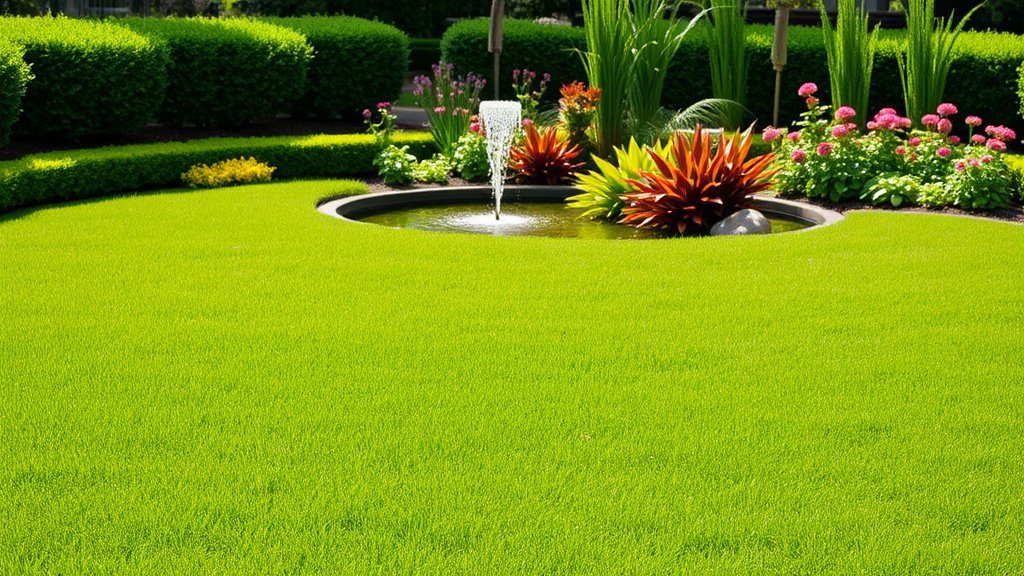Table of Contents
- Introduction
- Understanding Lawn Care Basics
- Choosing The Right Grass Types
- Seasonal Maintenance Tips
- Sustainable Watering Practices
- Natural Pest Control Methods
- The Role of Soil Health
- Tools and Technology in Lawn Care
- Long-Term Lawn Improvement Plans
A complete, vibrant lawn is often considered the crown jewel of home exteriors, offering aesthetic appeal and a natural playground for family and friends. Ensuring continuous greenness and lushness requires a holistic approach that includes understanding climate-specific needs and utilizing innovative care practices. Various methods can help you achieve the desired verdant lawn, from selecting adaptable grass types to leveraging cutting-edge lawn technologies. For those residing in regions with distinct climates, like Maine, considering professional lawn care in Maine can ensure tailored maintenance that aligns with local weather conditions and soil types.
Implementing a robust lawn care routine can be rewarding and deliver satisfying results. Whether dealing with harsh winters or scorching summers, adapting your practices to local environmental conditions enhances your lawn’s resilience and beauty. By focusing on season-appropriate interventions and sustainable practices, you can maintain this green paradise while being environmentally conscious.
Understanding Lawn Care Basics
Fundamental lawn care practices such as mowing, watering, and fertilizing are the backbone of a healthy lawn. Proper mowing techniques involve cutting grass to the recommended height, which may vary depending on the grass species. Grass cut too short is vulnerable to stress, while overly long grass may lead to unevenness and more disease exposure. Adequate watering schedules ensure that moisture reaches the roots, promoting profound root growth and reducing the likelihood of shallow root systems that can be easily damaged. Fertilization, ideally done at specific times of the year, replenishes essential nutrients and supports the robust health of your lawn, making it lush and green.
Choosing The Right Grass Types
Successful lawn sustainability hinges significantly on choosing grass types best suited for your local environment. Cool-season grasses, such as Kentucky bluegrass and fescue, are ideal for areas with prolonged winters, offering a green blanket when many other plants lie dormant. Conversely, warm-season grasses, like Zoysia and Bermuda, are hardy and drought-tolerant, thriving in regions with high temperatures. Consider sunlight exposure, soil conditions, and moisture availability to determine the most suitable grass. Ensuring compatibility with these conditions can make a marked difference in achieving a vigorous and durable lawn.
Seasonal Maintenance Tips
Lawn care is dynamic and season-specific, requiring strategies tailored to the varying demands throughout the year. Spring is a period of rejuvenation and growth, making it the optimal time for aeration, which relieves soil compaction and enhances nutrient exchange. Pre-emergent herbicides establish a weed-free foundation by preventing weed seeds from germinating. As the summer heat peaks, consistent watering and thoughtful mowing practices become crucial to reducing stress and preventing water loss. In fall, overseeding and fertilization are stepping stones for a thriving lawn in the spring as they prepare your lawn for the dormant winter months. Strategic scheduling allows you to make the most of each season’s distinct benefits.
Sustainable Watering Practices
Efficient water use is foundational to sustainable lawn care, benefiting the environment and your lawn’s health. Installing drip irrigation or using soaker hoses can minimize evaporation and runoff, delivering water directly to the root systems. Practice weather-based scheduling, adjusting the frequency and duration of your watering according to local rainfall patterns and temperature forecasts. This approach not only conserves water but also helps maintain the healthy growth of grass with minimal resources. Explore sustainable watering methods to optimize your lawn’s hydration strategies with intelligent and responsible approaches.
Natural Pest Control Methods
Eco-friendly pest control methods contribute critically to the health of your lawn’s ecosystem. Encouraging beneficial insects like ladybugs and predatory mites provides natural pest management while maintaining ecological balance. Organic solutions such as neem oil or insecticidal soap offer effective options for targeting invasive species without harming the surrounding environment. Fostering diverse biodiversity on your lawn further enhances its natural resilience, reducing the need for chemical interventions and creating a healthier landscape ecosystem.
The Role of Soil Health
The vitality of your grass is intrinsically linked to the health of the soil, making soil care a pivotal element of lawn maintenance. Regular soil testing to evaluate nutrient levels and pH balance helps identify areas for improvement. Introducing organic matter, like compost, enriches soil structure, promoting healthy microbial activity and ensuring sustained nutrient availability. Aerating the soil allows essential elements—air, water, and nutrients—to penetrate deeper layers, encouraging robust root systems. Healthy, well-balanced soil provides the foundational support for a resilient and thriving lawn throughout the year.
Tools and Technology in Lawn Care
Modern tools and technology have transformed traditional lawn care into a streamlined, data-driven process. Robotic lawnmowers deliver precise cuts, adapting to different landscapes while collecting valuable data on mowing patterns and lawn conditions. Smart irrigation controllers adjust watering schedules based on real-time weather updates, conserving resources and enhancing water efficiency. Lawn care apps offer a wealth of knowledge with personalized tips, curated reminders, and trackable maintenance progress, bridging the gap between traditional lawn care and modern innovations for more competent lawn management.
Long-Term Lawn Improvement Plans
Envisioning a lush lawn year-round requires strategic long-term planning that adapts to changing conditions, incorporating new techniques and trends. Regularly assessing your lawn’s needs and aligning them with emerging strategies ensures continued health and visual appeal. As the seasons change and new solutions arise, integrating innovative strategies fosters improved outcomes and nurtures continual improvement. A commitment to learning and adaptability allows you to create a sustainable, thriving lawn that remains a source of enjoyment and pride for years.
Achieving and maintaining a lush, vibrant lawn combines dedication with time-tested and avant-garde techniques. Harnessing the input from resources, such as comprehensive lawn care tips, alongside your creativity and willingness to adapt, will transform your landscape into an invaluable asset that continuously adds value to your property.
